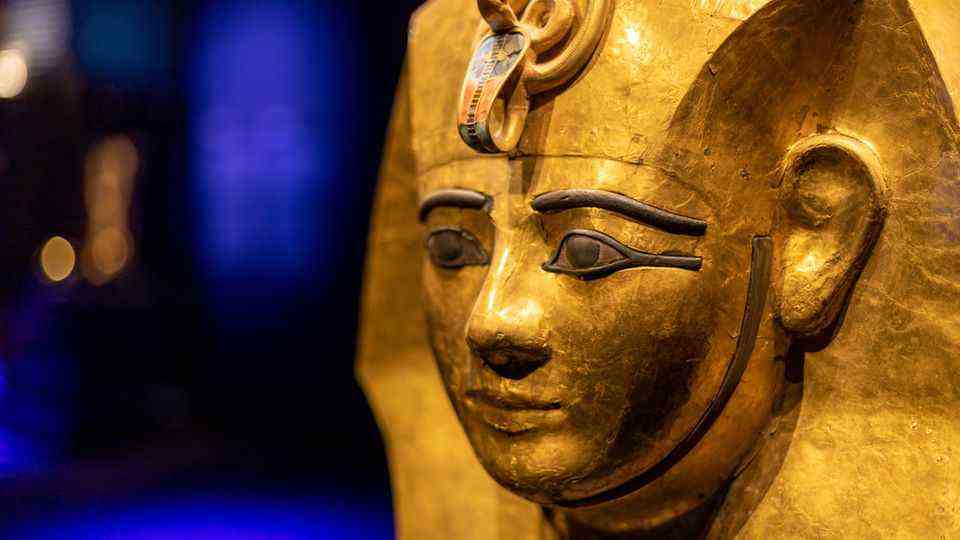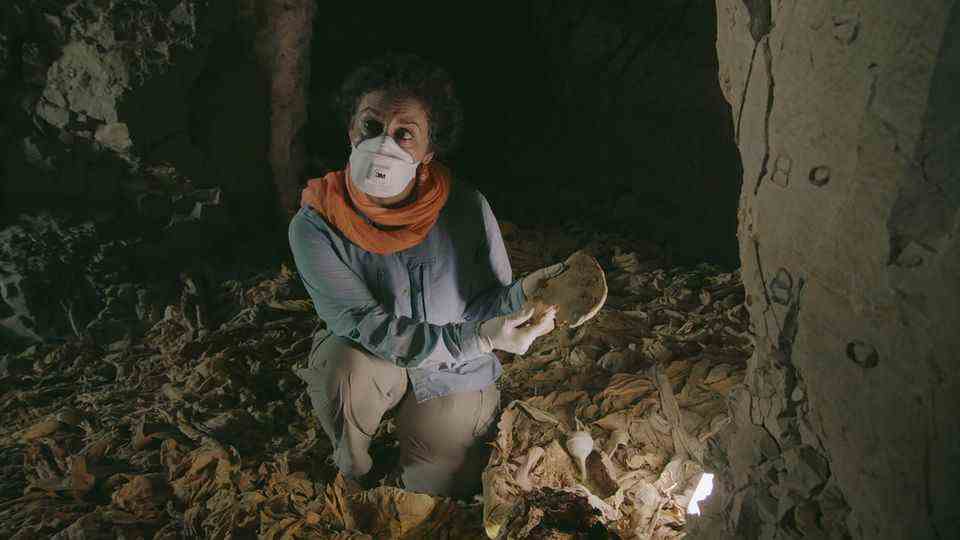Magnificent traveling exhibition
Ramses II, this pharaoh defeated the mighty Hittites and led Egypt into its greatest prosperity
The reconstructions shone in the old colors – there was nothing too colorful in Egypt.
© Houston Museum of Natural Science / pr
The exhibition “Ramses the Great and the Gold of the Pharaohs” celebrates the gods, the rulers and the great love of the pharaoh. Computer animations bring the exhibits to life, including the Battle of Kadesh – with his victory, Ramses II ushered Egypt into a golden era.
Before the Battle of Kadesh in 1275 BC, Ramses II organized his troops into four groups, named after the great gods Amun, Re, Ptah and Seth. And his soldiers would need the help of the gods, too. Because the young Ramses led only about 20,000 men into the field, the opponents under the king of the Hittites Muwattalli 37,000. The Egyptians and their allies only had bronze weapons, while the Hittites were the first people in history to have hardened iron slashing weapons.
Only with God did Pharaoh triumph
According to legend and according to Egyptian tradition, Ramses II achieved victory almost single-handedly and abandoned by most of his troops because the god Amun himself stood by his side in battle. In reality, the battle was probably not quite as spectacular. The trapped pharaoh managed a tactically excellent breakout. The battle itself ended in stalemate, but the Hittite expansion that threatened Egypt was halted. A little later their kingdom disappeared from history.
This victory and his monumental buildings made Ramses II one of the greatest and most famous pharaohs ever. Today the mighty warrior goes on a journey again. With a traveling exhibition, he announces the gold and fame of the rulers and is also supposed to help his country’s ailing tourism on its feet.
Egypt as a spectacle
The first stop of the exhibition is Houston. This exhibition doesn’t think much of explanatory bear exhibitions with sparse exhibits and endless text panels. It is an overwhelming spectacle – which should also suit Ramses the Great. His masterpiece, The Battle of Kadesh, becomes a three-dimensional experience on three screens. The troops are marching through the room, arrows are whirring and lions are jumping towards the chariots.
“Technology can make the exhibition and the objects a thrill, an adventure, a mystery … that transports visitors back 3,000 years to the time of the pharaohs,” the exhibition’s curator, Egyptian archaeologist Zahi Hawass, told the Smithsonian magazines”. The viewer should be amazed by the power of the pharaohs and the size of ancient Egypt. This concept is not surprising. Egypt itself has clearly turned away from the scholarly exhibition in recent years and is celebrating its history with spectacular parades and all imaginable pomp. Motto: What is right for the biggest pop acts on stage can only be cheap for the gods of Egypt.
The Guardian of Harmony
Ramses II not only ruled for 67 years, from 1279 to 1213 BC. BC, the time of his long reign left a multitude of testimonies from all areas of life, which is by no means a matter of course in Egyptology. In addition to the official records – there are three sources for the battle alone – there is material from the administration, but also testimonies from construction workers, priests and craftsmen. The pharaoh’s military strength and diplomatic skills led to political power and both in turn to income, and the economy flourished. This is how Ramses could become a great master builder. Temples, tombs, statues and obelisks were erected throughout the empire. He often erected his buildings on walls and foundations of older buildings. It used to be seen as a sign of thrift and a decline that was more appearance than reality. Today one assumes otherwise: The places and the remainders of the old temples and complexes should not be covered. On the contrary, the legitimacy and salvation of the old sites should charge the new buildings.
The Great Wife Nefertari
The largest and most famous structures are the temples of Abu Simbel. Carved deep in the rock, they pay homage to the sun gods and a woman: Nefertari. The beloved Queen, the “Great Royal Wife”. At that time she was depicted in the same size as her husband. Inscriptions throughout the empire evoked her beauty and the pharaoh’s love for her. Along with Tete and Nefertiti, she is one of the three great queens, but Ramses’ wife surpassed all the others in power.
Ramses is still the synonym for pharaonic greatness, he bore the name Userma’atre’setepenre – guardian of harmony and peace. 181 unique artefacts go on the journey, most of them from the ruler’s time. A total of ten cities will be visited. Instead of texts, the curators rely on animated video sequences that put objects back into their original context. Individual artefacts become living ensembles, just like they looked in ancient Egypt. This is also a break in archaeology. European-dominated science has always had a certain uneasiness about the blazing splendor and lurid variegation of antiquity. One was horrified to discover that the Greeks and Romans originally painted the immaculate marble statues in bright colors.
Glorious past
The Egyptologists from Egypt do not share this tendency towards black-and-white aesthetics. Drone recordings are processed in such a way that the facilities at Abu Simbel or Ramesseum are displayed in their entirety again. The colors of the walls and hieroglyphs, which have faded today, shine again in brilliant colors. Those who wish can take a virtual reality tour of Abu Simbel and the Tomb of Nefertari, guided by the spirit of the Great Consort herself. Hawass, Egypt’s former Minister of State for Antiquities, is now leading the “largest excavation ever undertaken” inside of the Ramses grave. He is confident that he will always bring new knowledge and sensations to light. What can be seen above the ground represents perhaps 40 percent of what the land of Egypt hides. “We make a lot of discoveries in Egypt. It happens every month.”






